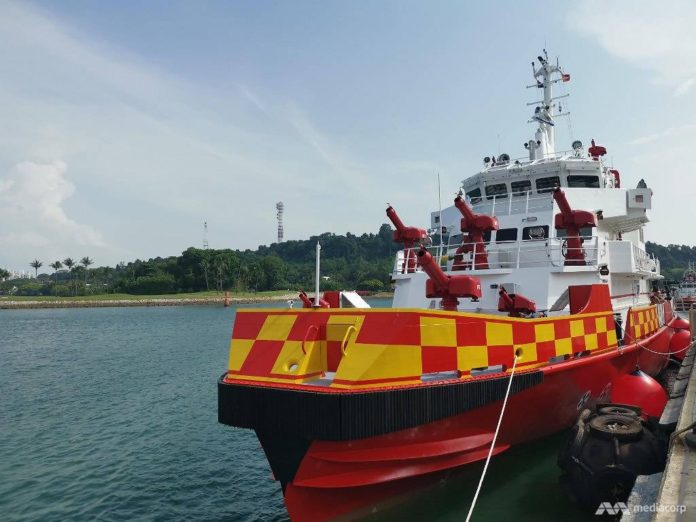SINGAPORE: Three new firefighting vessels, including one the Singapore Civil Defence Force (SCDF) touted as the “world’s most powerful firefighting vessel”, was commissioned by Home Affairs and Law Minister K Shanmugam on Tuesday (Aug 20).
The three vessels – the Marine Rescue Vessel (MRV), Heavy Rescue Vessel (HRV) and Heavy Fire Vessel (HFV) – will be fully operational by 2020 as the crew is currently undergoing training, according to the SCDF.
With the addition of the three vessels, the SCDF Marine Division now has a total of eight fire-fighting vessels in its fleet, and more could be added in the future, said Assistant Commissioner (AC) Derek Tan during a press briefing ahead of the commissioning of the vessels.
It previously could call on three Rapid Response Fire Vessels (RFVs), which are the equivalent of the land-based Red Rhinos, and two Marine Fire Vessels (MFVs) to respond to fires at sea, AC Tan said.
The enhancement in assets is timely given that Singapore has one of the world’s busiest ports and with the Tuas Mega Port starting its first phase of operations in 2021, there will be more traffic, SCDF said.
In addition, the operation of Marina Bay Cruise Centre since 2012 has resulted in a steady growth in the local cruise industry, with an increase in numbers of high passenger-carrying cruise ships operating out of here, it added.
“The high volume of sea traffic requires a greater capability, capacity and efficiency in handling various forms of maritime emergencies,” SCDF said.
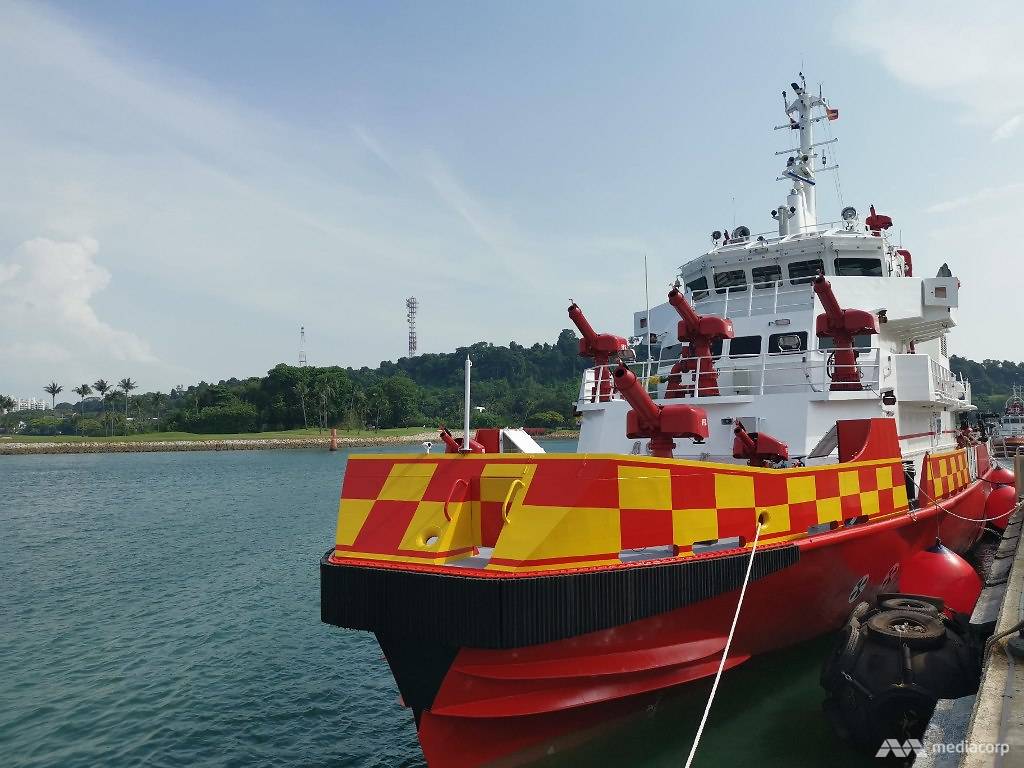
The Heavy Fire Vessel has 12 monitors capable of a total output of 240,000 litres of water per minute, making it the world’s most powerful firefighting vessel, says SCDF.
With the setting up of the Loyang Marine Fire Post in 2017 to improve coverage for the eastern part of Singapore, SCDF marine vessels can now respond within 45 minutes to incidents in most parts of Singapore, said Mr Shanmugam in his speech at the commissioning ceremony.
The response time is likely to improve further with the new Gul Marine Fire Post and Punggol Marine Outposts starting operations in 2020 and 2021, respectively, the minister added.
SCDF worked closely with the Defence Science and Technology Agency (DSTA), as well as local shipbuilders Penguin International and ST Engineering’s Marine arm to conceptualise and build the newly commissioned vessels, following study trips to look at what was available in the market.
Construction of the three vessels began in 2017.
CNA takes a closer look at the three different types of vessels capable of handling anything from chemical, biological and radiation (CBR) incidents and mass evacuations to fighting big fires out at sea.
HEAVY FIRE VESSEL (RED SAILFISH)
Codenamed the Red Sailfish, after the SCDF Marine division’s mascot, the HFV is touted as the world’s most powerful firefighting vessel. It boasts 12 water and foam monitors and has a total output of 240,000 litres of water per minute.
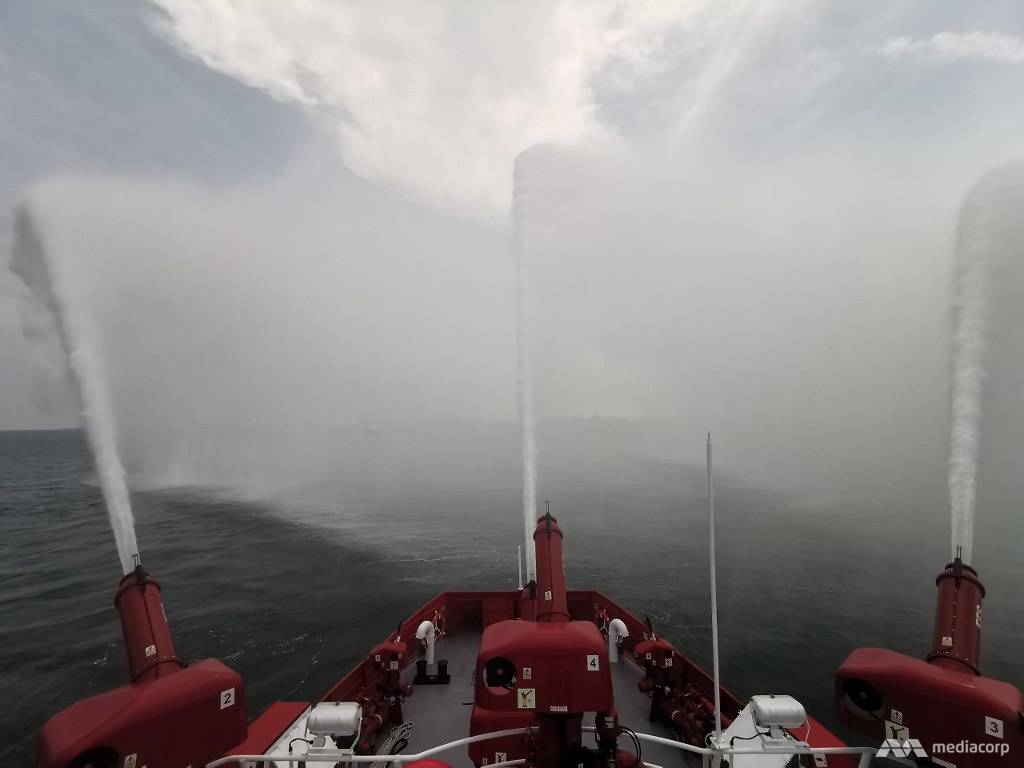
Red Sailfish’s onboard monitors can spray water up to a distance of 200m.
These monitors can spray water up to a distance of 180 metres to 200 metres, SCDF added.
It is also the first firefighting vessel to have a dynamic positioning system (DPS), which allows the ship to automatically steer itself to counteract the reaction forces of its powerful pumps, SCDF said.
AC Tan explained that the conventional way would be to have two crew members manually control the engine and steering.
“This is manual, very tedious and the (likelihood of) human error becomes higher,” he explained.
With the DPS, which is commonly found in commercial vessels, this can help reduce the dependence on onboard crew members given that the function can be engaged for 96 hours straight, he added.
The vessel is 50m long and has a top speed of 20 knots (or about 37 kmh). It is equipped with CBR protection and detection system, thermal imaging capabilities and a rigid-hulled inflatable boat (RHIB) for quick launch and recovery operations.
There’s a rigid-hulled inflatable boat at the back of the Red Sailfish, allowing the crew to launch quick rescue operations.
It also has a rescue room that could take up to 30 evacuees sitting or six lying down, SCDF said.
The Red Sailfish can also transform into a mobile pumping station for its land counterparts, particularly for near-shore operations.
HEAVY RESCUE VESSEL (RED MANTA)
The HRV, codenamed Red Manta, was built to deal with mass evacuation situations, according to AC Tan.
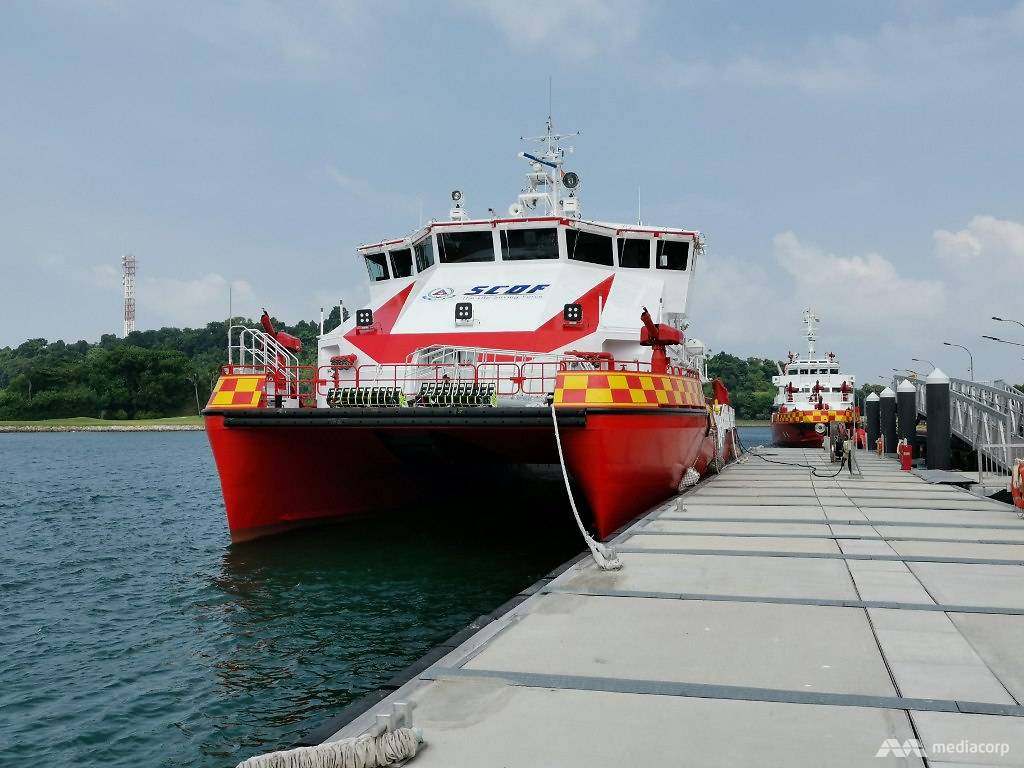
The Heavy Rescue Vessel is the first catamaran in SCDF’s fleet, and the design helps make it more stable for ship-to-ship operations.
The first catamaran vessel in the force’s fleet, the 39.5-metre Red Manta has a capacity for 300 people and comes equipped with a medical treatment room and decontamination chambers. In fact, it has 12 automated decontamination shower cubicles that allow for mass decontamination of casualties, it said.
The Red Manta’s decontamination room has 12 automated shower cubicles for mass decontamination of casualties, and it can also allow for those lying on stretchers.
The twin-hulled design means the vessel is highly stable, which facilitates vessel-to-vessel operations out in open seas. It also has a top speed of 35 knots, the agency said.
Dorm rooms on board the Red Manta come in single (pictured) and bunk beds, with only the single bedders having an accompanying toilet in the room.
Additionally, the HRV is designed with a heli-winch pad on one of its decks, thus allowing for quick evacuation of casualties in need of urgent medical intervention, AC Tan said, adding it is the SCDF’s only vessel with such a feature.
The Red Manta also functions as a mobile command post during incidents, with the boardroom equipped with 3G and 4G connectivity for real-time situational awareness.
MARINE RESCUE VESSEL (RED DOLPHIN)
Last, but not least, is the MRV – the smallest of the three newly commissioned vessels (34.9m) but also the most versatile, said AC Tan.
The Marine Rescue Vessel has a top speed of 30 knots, and will be the primary vessel for major incidents.
The vessel, named after the dolphin for its versatility and rescue capabilities, is equipped with a CBR filtration system, decontamination cubicles and pressurised cabins capable of responding to CBR incidents at sea, he said.
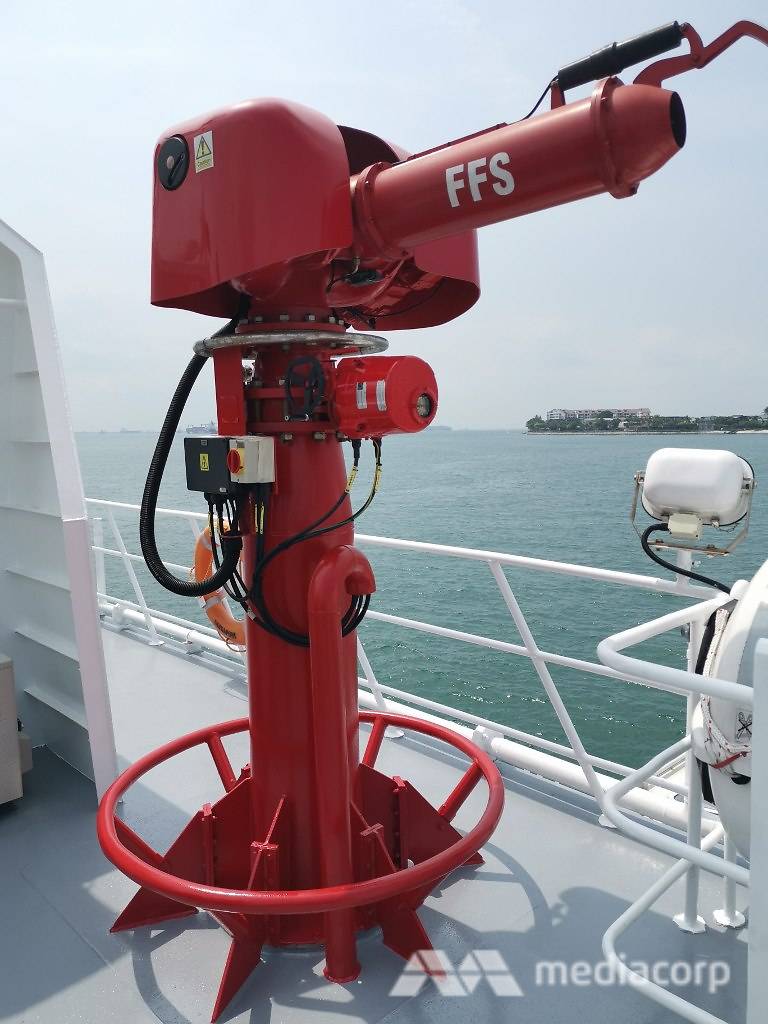
This is one of three monitors on board the Red Dolphin, giving it firefighting capabilities in addition to its ability to respond to chemical, biological and radiation (CBR) incidents.
It also has three firefighting systems capable of pumping out 88,300 litres of water per minute.
With a top speed of 30 knots, the Red Dolphin will be the primary vessel for major incidents, SCDF said.
There is a medical room on the Red Dolphin for treating casualties after they have been decontaminated, and this includes those who are stretchered on board.
